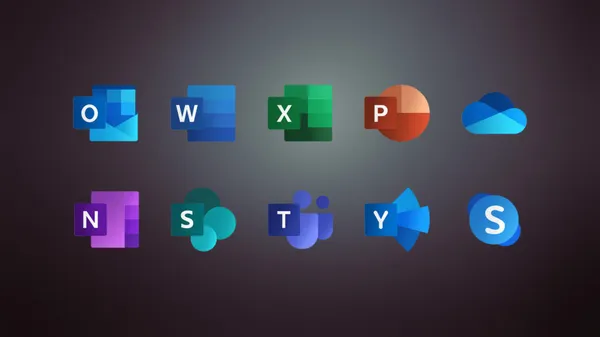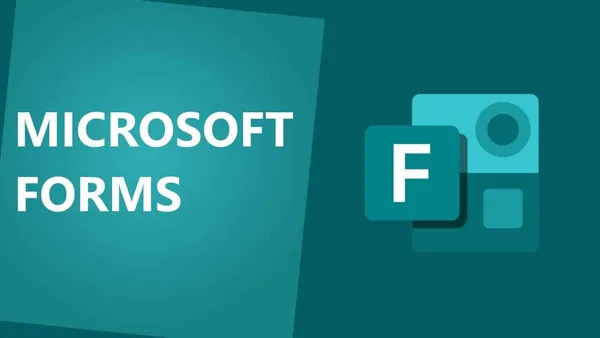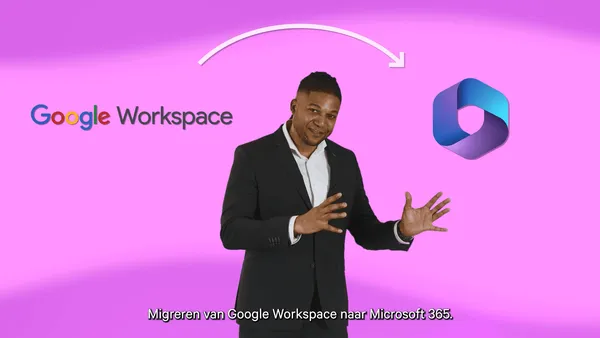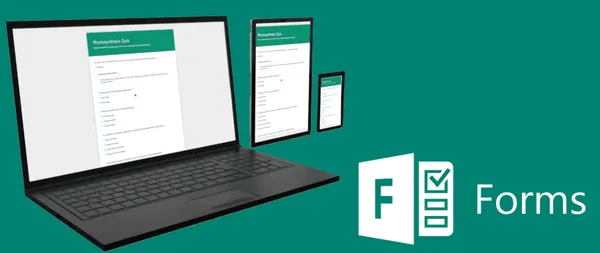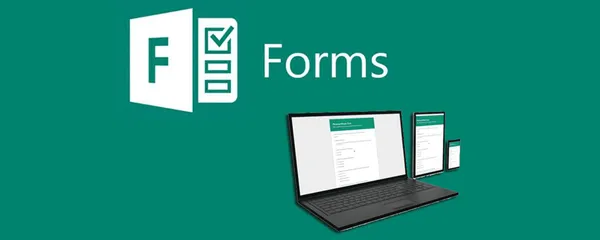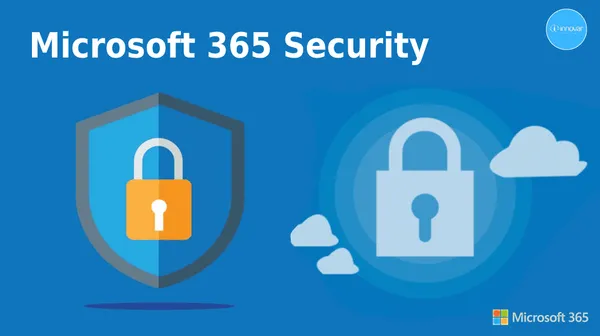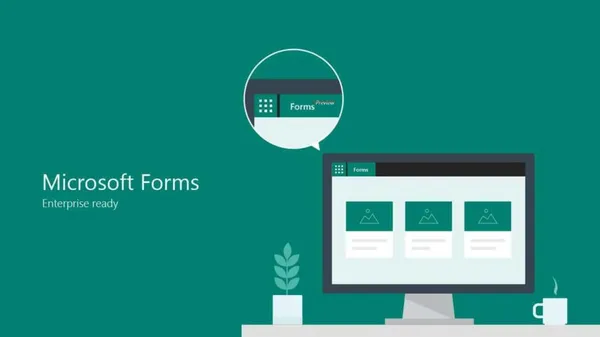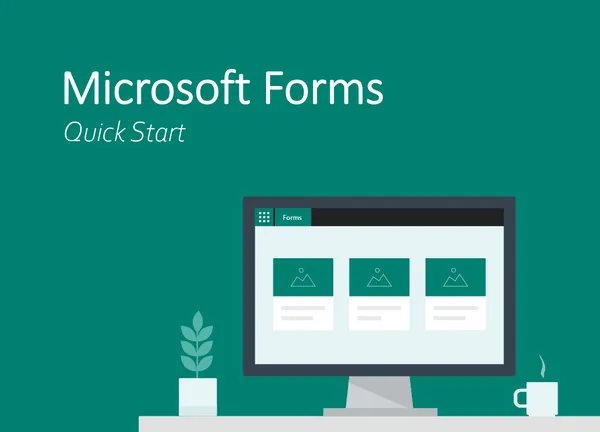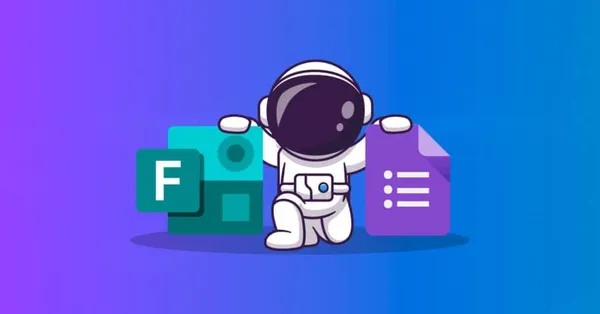
Knowledge base
March 28, 2022
Microsoft Forms vs. Google Forms: Which Is Better?
If you want to collect data, one of the best ways to do it is with online forms, surveys, polls, and quizzes. Using an online form builder tool, you can create custom forms with different types of questions such as multiple choice, rating scale, or open text.
Two leading form builders are Microsoft Forms and Google Forms. Both are easy to use, offer robust functionality and work well in business and educational environments. Not sure which one to choose? Read on for an overview of Microsoft Forms vs. Google Forms that will help you decide which one is best for you.
Pros and Cons of Microsoft Forms
Part of the Microsoft 365 suite, Microsoft Forms is a web-based app that is accessible on all platforms and browsers. It is used in corporate and educational settings and is also available for personal use. The app is free for personal use with any Microsoft account. Additional features such as a higher respondent limit come with paid Microsoft 365 Personal, Microsoft 365 Education, and Microsoft 365 Business accounts.

Microsoft Forms makes it easy to create forms, quizzes, and surveys, such as customer or employee satisfaction polls, year-end tests, and event registration forms.
One of the main benefits of Microsoft Forms is the branching logic feature, which you can use to send respondents to different questions based on their answers to previous questions. This way, users only see questions that are relevant to them. Another unique advantage is how easy it is to export form responses to Microsoft Excel for analysis.
Dominic Harper, entrepreneur and founder of Debt Bombshell , has used both Microsoft Forms and Google Forms in his business. One of the major drawbacks of using Microsoft Forms, according to Harper, is its limitations when it comes to collaboration.
“By sharing and collaborating on the form, Google Forms allows you to be freer because it’s only an invitation that’s required to perform this function,” Harper says. “With Microsoft Forms, you have to spend a few dollars to be able to collaborate with other people.”
Advantages and disadvantages of Google Forms
Part of Google’s suite of tools, Google Forms is a web app that can be accessed on any platform. It is used in a variety of settings, from business and education to social and personal. The form builder is free, but you do need a Google account to use it.
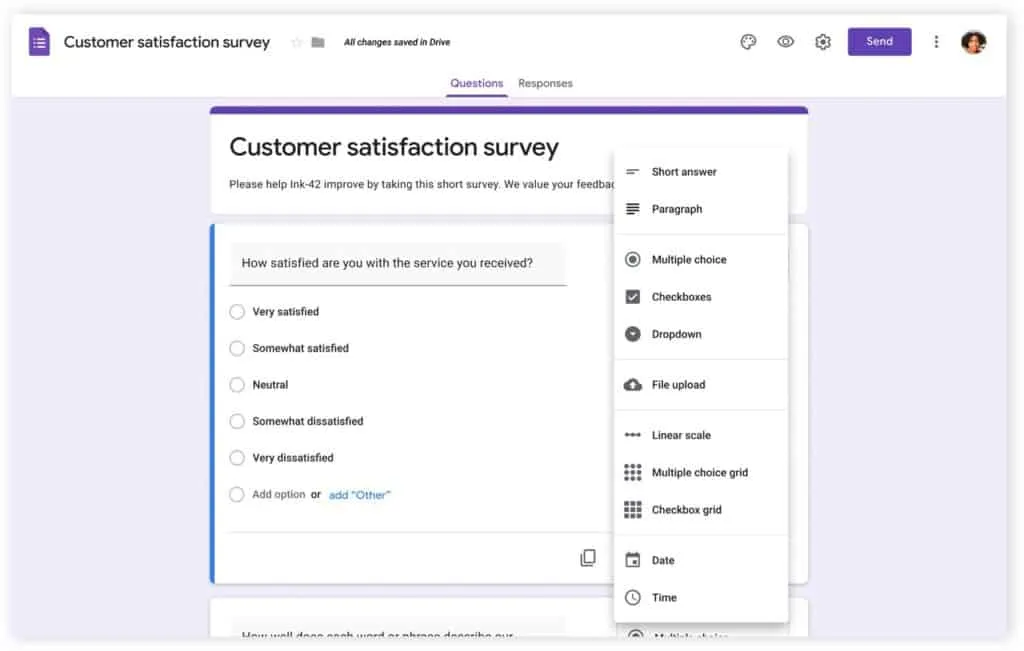
Unlike Microsoft Forms, Google Forms offers a number of question formats, such as linear scale, drop-down list and multiple choice.
“For the Q&A, Google Forms is definitely better than Microsoft Forms,” says Harper. “With its wide range of question formats and sections, this flexibility makes it easier for a user to create their own questions.”
Like Microsoft Forms, Google Forms offers a kind of branching, where users can jump to different sections in the form based on answers they have provided.
When it comes to images, Microsoft Forms is the leader, according to Harper. “It has a variety of themes to choose from, unlike Google Forms, where you can only change the color and background,” he notes. “Microsoft Forms also has attractive and dynamic themes, which is a plus if you want aesthetically pleasing web pages.”
Microsoft Forms vs. Google Forms: Which One Is Right For You?
The answer to that question isn’t as simple as choosing the app with the best functionality or the lowest cost. To make the best choice, you need to determine your needs for the app and how it fits into the other platforms you use every day.
For example, if you work primarily with the Google suite of apps, Google Forms may suit you better because you can integrate it seamlessly with your existing applications and you don’t have to learn how to use a new platform.
Now that you’ve researched Microsoft Forms vs. Google Forms, weigh the pros and cons to determine which tool is right for your needs. Once you’ve made your choice, it’s time to put the tool into action and collect data to make better decisions.
source: jotform
Want to know more?

Related
blogs
Tech Updates: Microsoft 365, Azure, Cybersecurity & AI – Weekly in Your Mailbox.
